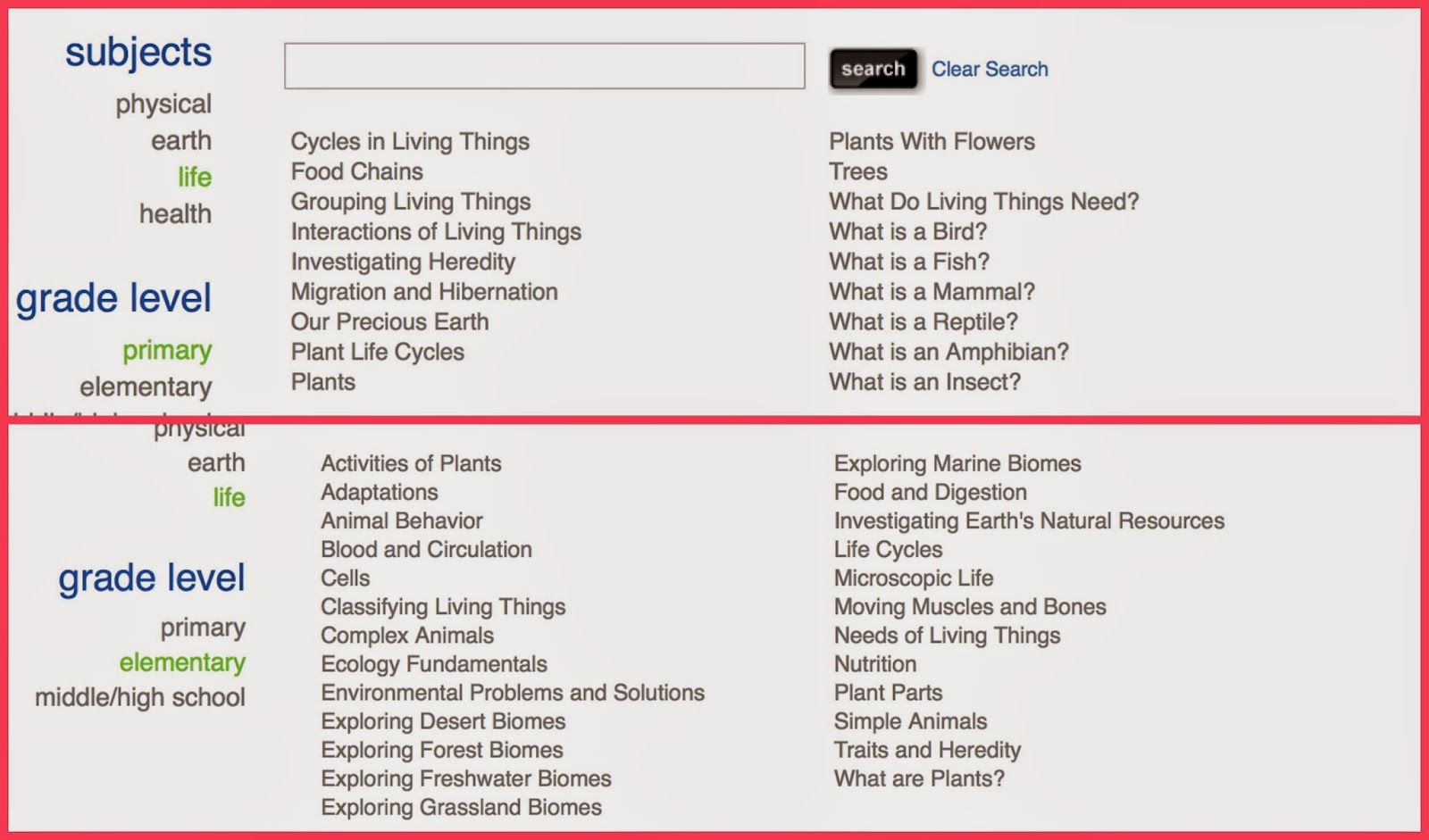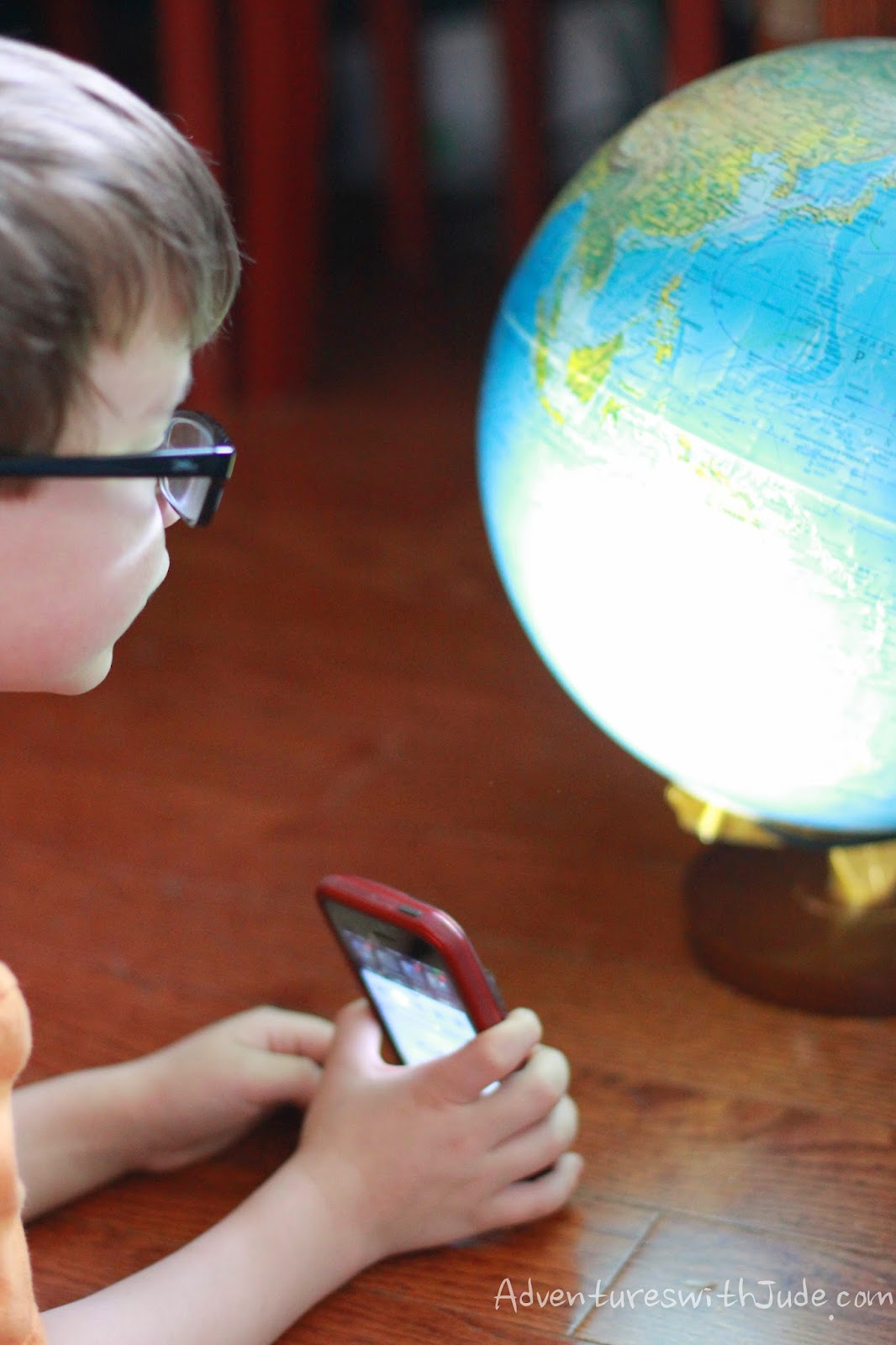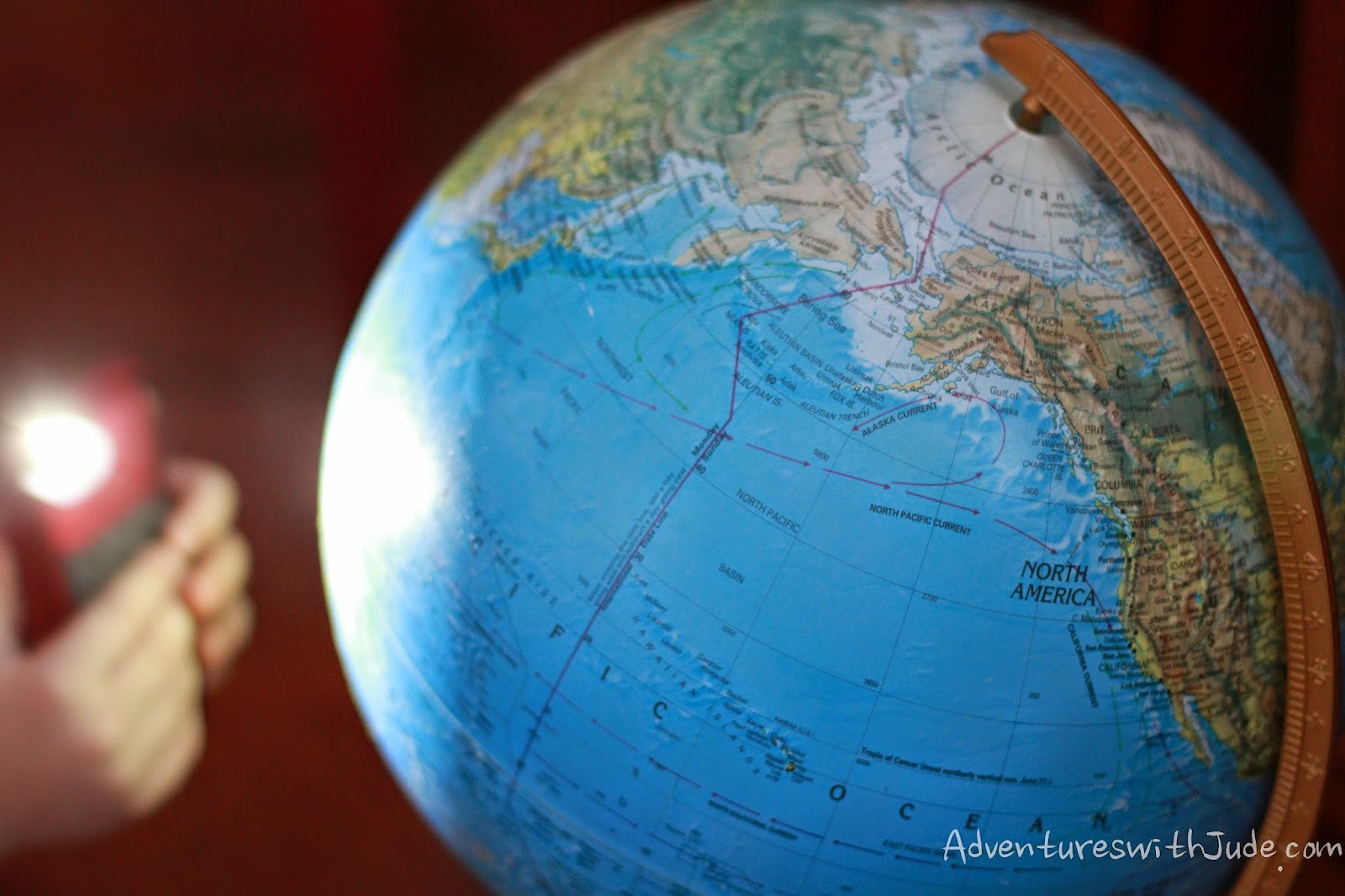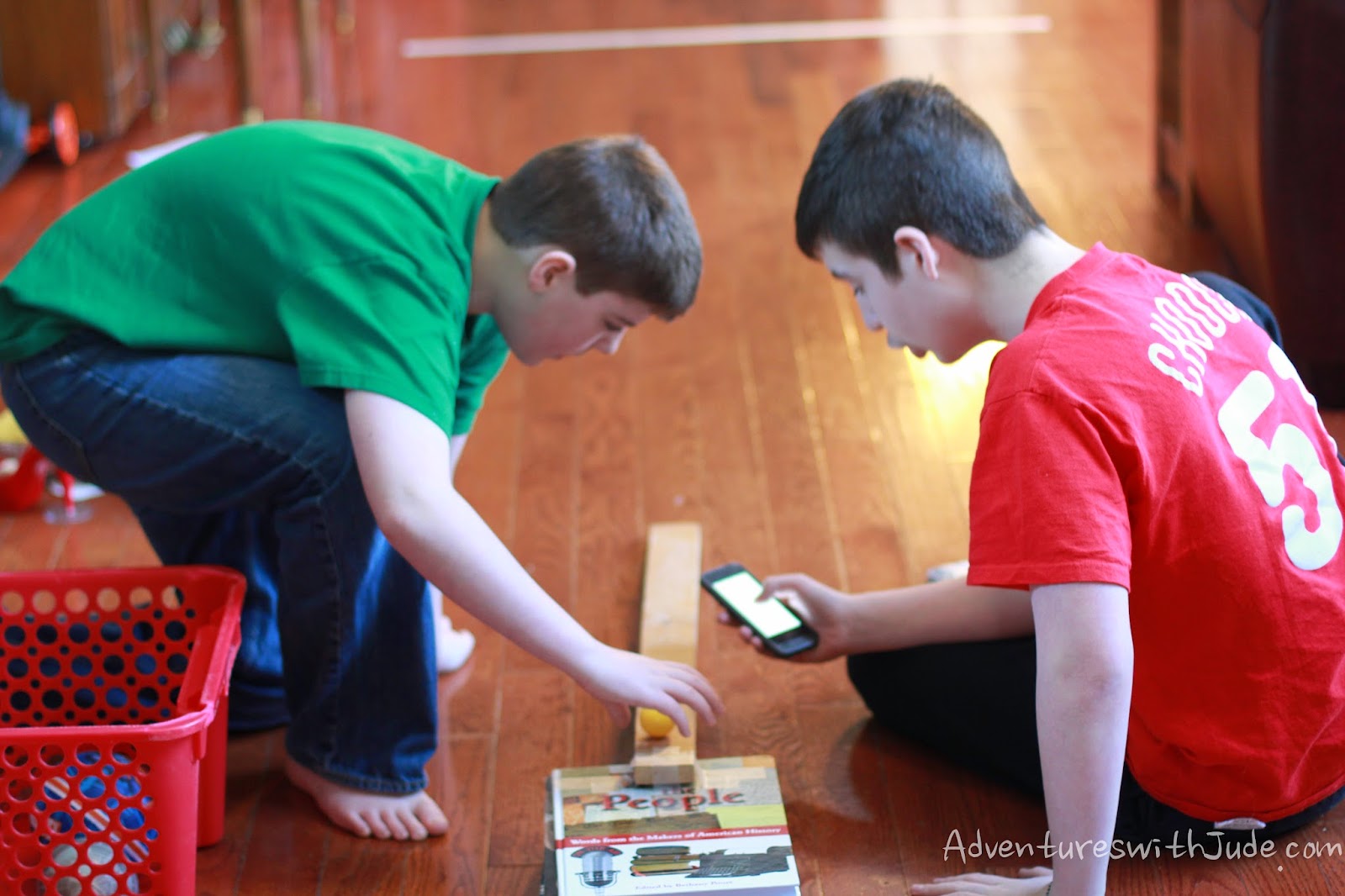Digital Science Online is a program offered by Visual Learning Systems. Annual subscriptions for either Digital Science Online: Elementary Edition or Digital Science Online: Secondary Edition students offer a multi-sensory way to discover the scientific world. We received subscriptions to both levels consisting of both student programs and teacher guides, so all of the boys had an opportunity to explore the program.
Elementary Edition
The elementary program is divided into two sections: Primary (approx. grades K-2) and Elementary (3-5). This is a good idea because while younger children can grasp many scientific concepts, an older student is better prepared for a deeper study. Videos lasted approximately 10-12 minutes (including title/end credits and a short review/Q&A) in the primary level, while elementary videos are closer to 15 minutes in length. In the Primary sections, concepts are introduced in a very basic level, and then expanded upon in the Elementary program with multiple videos on similar topics.
You can see how in the Primary level the program breaks down (for example) animals into individual types - birds, fish, mammals, etc. In the Elementary level, rather than discussing them individually, the program explains how to classify, and then explores the interaction of the animals in specific habitats/biomes.
Each program has pre/post assessments and worksheets for each unit. Some also have labs attached to them. When we worked on a Primary unit on Wind, we explored how wind made water move.
I wish there had been more hands-on labs and less worksheets at the Primary level. Every unit had worksheets, and very few (at least of the ones we studied) had lab-style, hands-on activities. Second-grader Jude did the worksheets, but because his reading skills are very limited to phoneme sounding, Kindergarten level Damien was almost completely left out once the video ended. In addition, while I think it's important for students to learn proper vocabulary, I also think it should be age-appropriate. Some of the words, once on paper, just seemed overwhelming to Jude. This is one of the worksheets Jude worked on.
While the words are used in the videos, this is definitely a worksheet that can't be given to a younger/delayed student to see how well he paid attention. Jude has the reading skills of an average kindergartener. He knew the answer to 8 Across was adaptation, but there was no way for him to know what the clue was without me reading to him. For 4 Down (hibernate), he had trouble even with the word bank - he knew that hibernate started with a /h/ sound, but hadn't learned yet about "long i" and was reading it as /hĭb-ĕr-năt-ĕ/. I think if he had the reading skills of a second grader, then he probably could have done better on his own. If you have a younger/less skilled student, be prepared for this to be a very teacher-intensive part of the program.
The quizzes etc. might be more appropriate for a group setting, where you are wanting to test several children's focus on the lesson. Since it was just Jude and I working on those, we did them orally, with me reading the page and Jude answering.
If you were doing science 2-3 days per week and wanted to stretch it out with the video one day, an activity the next, and a worksheet a third day, you definitely could. We found that the video + worksheets in one day wasn't too much (still under half an hour's worth of work). If you were doing unit studies, it would be a good resource for teaching a concept. For example, we worked on the Fossils section with our unit study on Dinosaurs. If you wanted, you could actually make your own unit studies from the program by arranging the topics into groups. For example, we created a science study to coincide with our math calendar lessons:
Day & Night/Sun & Stars
Winter/Spring/Summer/Fall (seasons)
Observing Weather/ Weather Safety
Most of these did not have any real hand-on learning labs. We created our own, using a flashlight and a globe, to explore how when it is daytime in one part of the world (for example, here in North America), it is night time someplace else (for example, at Aunt Jo and Uncle Brendan's home in Australia).
Second Edition
Luke and Matthew shared the upper grade section. Matthew is at the end of middle school (grade 8) and Luke is in 11th grade. This is still a good program, but I do not feel it is anywhere near the caliber needed to be a full program in each genre for those grades. For example, the boys worked together on the Physics/Motion unit. Luke is taking a full high school Physics course, and he felt it left out about half of what his program taught him. His opinion was it was more like his middle-school course where it was a more overview/general "Physical Science" course. It was certainly enough to get some basics and whet the appetite, but not enough to really dig in.Luke also said that he thought they videos felt "old" to him. I have to agree. While there is nothing wrong with them - they are well produced and contain good content - they do have an older feel. On one hand, some scientific information is timeless, but at the same time one particular clip we studied uses Hurricane Hugo as an example. Hugo made landfall at the start of my freshman year of high school, so I can understand why he felt some of the presentation felt stale.
We did a few of the units, to get a feel for the upper program, and for all of them Jude sat in and understood the lessons. Again, content was solid, but if a 2nd grader can understand them, then I don't think they are strong enough to be more than a supplement for a high schooler. In addition, when Jude did his Primary-level study of wind, one of the vocabulary words was anemometer - a device that measures wind. In the high school study on motion, the program used the term "wind gauge." Jude piped up, "That's not a wind gauge! That's an anemometer!" Technically, they're both right, but I don't think the K-2 vocabulary should outshine the high school level.
I did like how the upper grades offered more labs than the lower grades. Three of the boys teamed up for this Physics lab on velocity.
Final Thoughts
I think overall this is a good adjunct program. I don't think it's going to replace our current programs for the older boys, but is definitely something we will used to complement them for more background information as well as hands-on learning. While we received both levels, if I had to choose one, I would actually consider the upper grade first because they were labs that younger students could do (some independently, some with supervision/an older lab partner), and the video content was not too advanced, and could even be presented into 2-3 minute video chapter (already divided on the site) backgrounds that would go along with other age-appropriate activity.For more reviews, click the banner below. To follow Visual Learning Systems on social media, visit
Facebook - http://facebook.com/visuallearningsystems
Twitter - https://twitter.com/visualearning

©2012- 2015 Adventures with Jude. All rights reserved. All text, photographs, artwork, and other content may not be reproduced or transmitted in any form without the written consent of the author. http://adventureswithjude.com











No comments:
Post a Comment